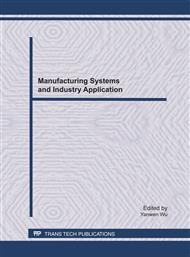[1]
Dj.M. Maric, P.F. Meier and S.K. Estreicher: Mater. Sci. Forum Vol. 83-87 (1992), p.119 Y. Du, F. Chen, W. Xu, et al: A Survey on the vision-based human motion recognition. Acta Electrionica Sinica, Vol. 35(2007), p.84.
Google Scholar
[2]
J. Gu, X. Ding, S. Wang: A survey of activity analysis algorithms. Journal of Image and Graphics, Vol. 14(2009), p.377.
Google Scholar
[3]
R. Popple: A Survey on Vision-Based on Human Action Recognition. Image and Vision Computing, Vol. 28 (2010)6, p.976.
DOI: 10.1016/j.imavis.2009.11.014
Google Scholar
[4]
J. Yamato, J. Ohya, K. Ishii: Recognizing Human Action in Time-Sequential Images Using Hidden Markov Model. in: Proceedings of IEEE International Conference on Computer Vision and Pattern Recognition. IEEE Computer Society Publications (1992).
DOI: 10.1109/cvpr.1992.223161
Google Scholar
[5]
A. F. Bobick, J. W. Davis: The Recognition of Human Movement Using Temporal Templates. IEEE Trans on Pattern Analysis and Machine Intelligence, Vol. 25(2001)3, p.257.
DOI: 10.1109/34.910878
Google Scholar
[6]
L. Wang, D. Suter: Informative Shape Representations for Human Action Recognition. in: Proceedings of International Conference on Pattern Recognition. IEEE Computer Society Publications (2006).
DOI: 10.1109/icpr.2006.711
Google Scholar
[7]
H. Meng, N Pears: Descriptive Temporal Templates Features for Visual Motion Recognition. Pattern Recognition Letters, Vol. 30(2009), p.1049.
DOI: 10.1016/j.patrec.2009.03.003
Google Scholar
[8]
M. Ahmad, S. Lee: Variable Silhouette Energy Image Representations for Recognizing Human Actions. Image and Vision Computing, Vol. 28(2010), p.814.
DOI: 10.1016/j.imavis.2009.09.018
Google Scholar
[9]
D. Weinland, E. Boyer: Action Recognition Using Exemplar-Based Embedding. in: Proceedings of IEEE Conference on Computer Vision and Pattern Recognition. IEEE Computer Society Publications (2008).
DOI: 10.1109/cvpr.2008.4587731
Google Scholar
[10]
http: /www. wisdom. weizmann. ac. il/~vision/SpaceTimeActions. html.
Google Scholar
[11]
A. Bluma, T. Mitehell: Combining Labeled and Unlabeled Data with Co-training. in: Proeeedings of the1lth Annual Conference on Leaming Theory (1998).
Google Scholar
[12]
S. Ali, A. Basharat, M. Shah: Chaotic Invariants for Human Action Recognition. in: Proceedings of International Conference on Computer Vision. IEEE Computer Society Press(2007).
DOI: 10.1109/iccv.2007.4409046
Google Scholar
[13]
L. Wang, D. Suter: Recognizing Human Activities From Silhouettes: Motion Subspace and . (1)nalysisard brackets (meV)hina Electric Power University, ����������������������������������������������������������������Factorial Discriminative Graphical Mode. in: Proceedings of IEEE International Conference on Computer Vision and Pattern Recognition. IEEE Computer Society Press(2007).
DOI: 10.1109/cvpr.2007.383298
Google Scholar


